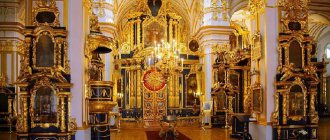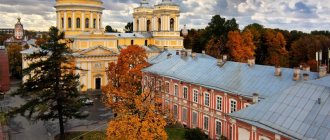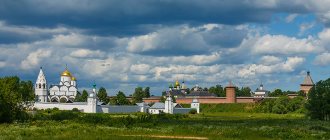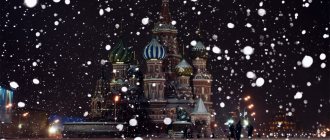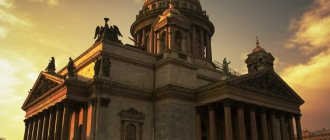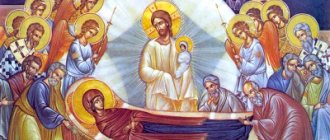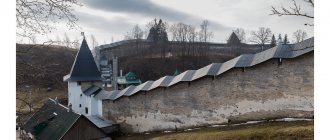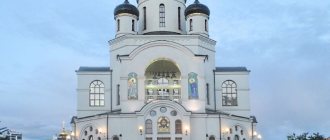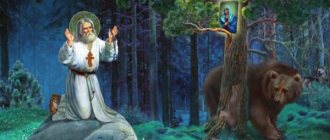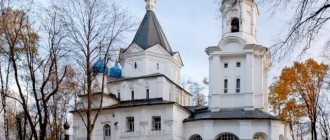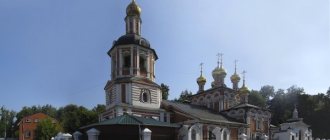Savior on Spilled Blood (Church of the Resurrection of Christ) in St. Petersburg is an Orthodox memorial church-museum, erected on the site of the assassination attempt on the Russian Emperor Alexander II the Liberator. This functioning nine-domed cathedral, which seats 1,600 people, is a symbol of the city and one of its main attractions.
© Daria Evseeva
History of the Church of the Resurrection of Christ
On March 1, 1881, Alexander II was mortally wounded in a bomb explosion thrown by Narodnaya Volya member Ignatius Grinevitsky. After the death of the emperor, deputies of the City Duma turned to Alexander III with a request to perpetuate the memory of the deceased, as a result of which the construction of the Church of the Savior on Spilled Blood began.
The authors of the project were the architect Alfred Parland and the rector of the Trinity-Sergius Hermitage, Archimandrite Ignatius (Ivan Malyshev). They created the cathedral in a “true Russian style,” preserving the site of the tragedy inside the temple. A fragment of the canal lattice, several slabs and cobblestones, stained with the blood of Alexander II, make up a composition hidden by the canopy, which can be seen when visiting the temple.
The ceremonial foundation of the church took place on October 6, 1883. Construction using advanced engineering and construction technologies for its time lasted 24 years. The consecration of the cathedral took place on August 19, 1907.
Detailed information about the Savior on Spilled Blood on the official website
Historical moments
- Erected in memory of Emperor Alexander II. At this place, in 1881, an attempt was made on his life, after which he died.
- The temple was built with donations collected by the whole country.
- Construction took 24 years from 1883 to 1907. The building itself was erected in 14 years, and the rest of the time mosaic work was carried out inside and outside.
- The architect for the project was selected through a competition. Many famous people of that time took part in it. The winner was chosen by Alexander the Third only after the third selection, it was Alfred Parland.
- Modern technologies were used in the work, so the building is fully electrified.
Cathedral architecture
The Savior on Spilled Blood in St. Petersburg is a unique monument of Russian church architecture, combining the styles of Moscow and Yaroslavl architecture of the 16th - 17th centuries. Its height reaches 81 meters.
The basis of the composition of the cathedral is a compact five-domed volume, completed on the eastern side by three semi-circular apses, and on the western side by a massive pillar-shaped bell tower. The octagonal tent is the site of the central chapter. The five central domes are covered with colored enamel over copper sheets, and the small onion domes and the central dome of the Savior on Spilled Blood have a traditional gilded finish. Thanks to these details, the Church of the Resurrection of Christ is often compared to the Moscow St. Basil's Cathedral.
Red-brown brick was used for construction, and the walls are decorated with bright, complex decorations. In the basement of the temple walls there are 20 granite plaques telling about the deeds of Alexander II as the Tsar-Reformer and Tsar-Liberator. On the lower tier of the bell tower there are 134 coats of arms of Russian regions and provinces, whose residents donated funds for the construction of the temple.
Savior on Spilled Blood in Google panoramas: external decoration
Hotels near Church of the Savior on Spilled Blood in St. Petersburg
Interesting facts and legends
The Savior on Spilled Blood is the only Orthodox church in St. Petersburg in which they ask not to light candles - fire can smoke the unique mosaics.
The history of its existence is surrounded by many events, sometimes mysterious.
Indestructible
The Savior on Spilled Blood acquired the glory of an indestructible cathedral: it was repeatedly planned to be destroyed, but each time this was prevented by various circumstances. In 1941, they even managed to drill holes in the walls of the temple to plant explosives . The outbreak of the Great Patriotic War prevented the cathedral from being blown up: all explosive specialists were urgently sent to the front.
"Peace to you"
The temple was not damaged even during fascist air raids. The only aerial bomb was discovered by accident during restoration in 1961 - it got stuck and lay unexploded for 20 years in the main dome of the cathedral.
as if right in the arms of the Savior holding the Gospel text “Peace be with you”
"Spas on Potatoes"
After breaking the siege of Leningrad, the cathedral was jokingly called “Savior on Potatoes” - at that time it served as a vegetable storehouse. There was a kind of bitter irony in this name: frozen potatoes saved the surviving Leningraders from starvation.
Symbolism of numbers
The height of the temple is 81 meters. The same number – 81 – is the year of the tragic death of Alexander II. The second highest dome of the Savior on Spilled Blood, the bell tower, rises 63 meters. The emperor was the same age at the time of his death.
Underwater Crosses
After churches began to close everywhere with the Bolsheviks coming to power in Russia, the threat of destruction also hung over the Savior on Spilled Blood. According to legend, in order to protect the cathedral's shrine - the crosses from the dome , they were secretly removed and hidden at the bottom of the Griboyedov Canal. Subsequently, during the restoration that began, no one could find them. The advice to look for them at the bottom of the canal was given to the restorers by a stranger passing by, who, perhaps, was not a random passer-by at all. The crosses were found by divers exactly where he indicated.
“I dream of removing the forests from the Savior on Spilled Blood...”
These are lines from a song by Alexander Rosenbaum.
He, like other creative people, was inspired by the temple, even when surrounded by scaffolding.
Restoration work, which began in 1971, dragged on for two decades , and the restored cathedral became a familiar sight for residents of St. Petersburg. And in the mid-80s, a legend was born that said that Soviet power in the country would last as long as there were scaffolding around the Savior on Spilled Blood.
The legend turned out to be prophetic: the forests were dismantled on the eve of the August 1991 putsch - the coup d'etat that ended the Soviet era
Mysterious icon
Tour guides , telling the history of the temple, often mention a certain mysterious icon kept under its arches. No one knows whether it really exists, but there is a legend that at certain moments you can see numbers appearing on it - dates that are fateful for the history of Russia .
So once upon a time the numbers were noticed on the icon: 1917 - the year of the revolutionary communist takeover, 1941 - the year of the beginning of the Great Patriotic War, 1953 - the year of the death of Joseph Stalin.
Mystically inclined lovers of secrets believe that other unclear numbers can be seen on the icon, perhaps carrying a prophecy about other future turning points in the history of the country.
Interior and mosaic of the Church of the Savior on Spilled Blood in St. Petersburg
The Cathedral of the Resurrection of Christ is the largest monument of Russian mosaic art. His collection is considered the largest in Europe. The area of surfaces decorated with mosaics exceeds 7000 square meters. m. To create it, Ural and Altai ornamental stones, colored Italian marble and thousands of gems were used.
Not only the walls and columns of the temple are decorated with mosaics; the floor of the cathedral, made of marble, consists of 45 mosaic carpets, the patterns of which are not repeated.
The iconostasis of the Savior on Spilled Blood is famous for its unique color selection of marble: the gradation of brown shades is reminiscent of wood carving. The mosaic for decorating the temple was produced in the workshop of V. A. Frolov, and sketches for it were created by more than 30 artists, including V. M. Vasnetsov, V. V. Belyaev and N. N. Kharlamov.
The decoration of the temple was badly damaged after its closure in 1930; for 50 years the monument was not heated and was used as a warehouse for theatrical scenery. Reconstruction began only in 1977 and continued until 1995.
Church of the Savior on Spilled Blood in Google panoramas: interior
Temple building
The historical center of St. Petersburg is a mixture of different architectural styles, such as Art Nouveau, Classicism and Empire. And in the center of the splendor of classical forms and styles is the amazing Church of the Savior on Spilled Blood. The building, built by the best architects, is decorated with bright domes, kokoshniks, interesting brickwork and pilasters.
Architecture
The temple is a striking example of the last stage of the so-called Russian style. The structure combines several images of Russian Orthodox cathedrals. When designing the building, architect Alfred Parland was guided and inspired by the churches of Moscow and Yaroslavl, which were built in the 16th-17th centuries.
Every visitor and resident of the city, at the first glance at the temple, notices a striking resemblance to St. Basil's Cathedral, which is located on Red Square in Moscow.
The appearance of the temple is painting in every sense of the word. The Savior on Spilled Blood is skillfully decorated and full of all kinds of details in bright colors. The temple is richly decorated with tiles, ornaments and icons. Various finishing materials were used to decorate the temple:
- brick and mosaic;
- marble and gilded copper;
- granite and enamel.
The outer side of the Savior on Spilled Blood is decorated with inscriptions that tell about the grandiose victories of the country during the reign of Alexander II the Liberator.
Artful and rich decoration of the temple
The temple building is asymmetrical and elongated in the east-west direction. In the eastern part there are three altar apses:
- One is in the center.
- Two small ones on the sides. They have beautiful gilded domes.
Three altar apses with gilded domes.
In the western area of the building there is a two-tier bell tower, which is decorated with large and rich domes. The temple doors are located on both sides of the temple. One is located in the northwest corner of the building, and the second door is in the southwest wing.
Niches on the outside of the cathedral with granite memorial plaques
The temple has many niches, which are decorated with twenty memorial plaques cut from dark red granite. On these boards, all the affairs and reforms of Tsar Alexander II, from 1855 to 1881, are engraved in gilded letters. Three sides of the bell tower are decorated with the coats of arms of Russian cities, districts and provinces. All of them are lined with amazing mosaics and are the main historical and cultural symbol of the temple.
One of the sides of the bell tower, decorated with the coats of arms of Russian cities and provinces
The space between the porches is decorated with a crucifix, which was also made using the mosaic technique. At the top is a double-headed eagle - the coat of arms of the Russian state.
The entire area occupied by mosaic compositions is about 400 square meters. m.
Domes
The Church of the Savior on Spilled Blood is crowned by nine domes, which together form an asymmetrical picturesque ensemble. Some domes, for example, the main and central domes of the tent, are covered with jewelry enamel. Others are covered with gilding.
View of the temple from above, all nine domes are clearly visible here
The compositional center of the temple is a quadruple topped with a five-domed dome. It has a unique feature - instead of a head, there is a tent in the center, the height of which reaches 81 m. The tent is octagonal and has eight elongated windows in its pedestal. The structures are decorated with platbands made in the form of kokoshniks. This not only adds a “zest”, but also gives a special atmosphere.
The highest dome is a tent covered with enamel in yellow, green and white shades
At the top the tent gradually narrows. There are eight small cornices with small windows. The decoration of the tent is completed by a lantern on which a bulbous dome is placed, covered with enamel in yellow, green and white shades. The colors are applied alternately in the form of stripes. There is also a cross installed here.
The tent is surrounded by four onion-shaped domes decorated with enamel. Each one has its own unique pattern and design. The domes are located on the so-called drums and, together with each other, create a symmetrical composition.
The bell tower of the temple rises 63 meters
The western part of the temple is reserved for the bell tower, the style of which is also completed with domes.
This design of the bell tower makes the Church of the Savior on Spilled Blood similar to the Cathedral of Ivan the Great, located in the Moscow Kremlin.
The belfry has eight arches, which are separated by columns. The three remaining domes are much smaller and are located in other buildings located to the east of the building.
Interior
The interior decoration of the temple is a truly unique and luxurious creation by the best craftsmen. The first thing every person should pay attention to is the windows. The structures are unique in their shape and design. Previously, windows had glass of different colors. Below - transparent, colorless. At the top of the window structure there was sky blue glass, and in the middle there was a graceful gradation of two shades. This artistic technique made it possible to create the illusion of the azure ceiling of the temple in any weather.
Various craftsmen worked on the interior style of the Church of the Savior on Spilled Blood. But despite this, the decoration looks like a single graceful composition. The interior of the building mixed not only styles and colors that play and shimmer in the sunlight, but also materials:
Mosaic. The interior of the temple displays magnificent mosaic works. Most of all the works and decorations inside the building are made in the style of mosaic art, while outside the mosaic is just a light touch of the external decoration.
The mosaic decoration of the Savior on Spilled Blood decorates approximately 7,065 square meters. m. This does not occur in any large Orthodox church. Luxurious mosaics cover almost all ceilings, floors and walls. The iconostasis and icon cases are also lined with mosaics.
All images in the interior are divided into groups according to theme. Drawings and ornaments using plant motifs and a blue-green hue reminiscent of night are placed in the porches of the temple. Scenes from the Old Testament, arranged on a soft blue background, are in the arches that lead from the porches. If you look at the pylons and pilasters, you can see images of the apostles, saints, prophets and martyrs.
In the central area of the building there are images telling about the earthly life of Christ. On the western side of the interior there are scenes on a golden background depicting the torment of the Savior, His crucifixion and Resurrection. From the east you can see motifs that show the end of the Gospel period.
Stone. This material is a special decoration of the temple interior. Its splendor, richness, grace and color scheme turned the interior into a unique example of stone-cutting art. To work on the design, only the best stones from different parts of the world were used: marble from Italy, jasper from the Urals and Altai.
All the material served as the basis for interesting ornaments and designs. The walls below, as well as the sole of the iconostasis and the benches, are made of green Calabrian marble. The base of the pylons located in the center is lined with labradorite brought from Zhitomir. This stone has an amazing property - iridescence. Because of it, a glow is formed in the room, as if a rainbow was looking through the windows. Dark blue colors smoothly flow into bright blue, and then into silver and gold highlights.
The floor of the Savior on Spilled Blood is made using Italian marble. The image on the surface is a geometric composition in dense dark colors.
Inside the temple, visitors can enjoy not only the noble and picturesque view of the iconostasis, icon cases, mosaic icons, but also the canopy and its stone decoration, which has historical value. It is located above the place where Alexander II was killed.
What else is remarkable about the Savior on Spilled Blood?
Lattice. Visitors to the temple should pay attention to the lattice that surrounds the Savior on Spilled Blood from the side of the Mikhailovsky Garden. It has an elegant ornate shape. The lattice is made in the Art Nouveau style, fits perfectly with the overall appearance of the temple and is considered the most beautiful architectural work of the city.
The fence of the Savior on Spilled Blood has a rounded configuration. Installed between columns on a high foundation. The design itself is made of cast iron and resembles the light lace of Russian beauties. Incredible and truly beautiful plant motifs are woven into it, emphasizing the style of the temple. The foundation and gate are also shrouded in fragments of ornamentation. Lanterns and majolicas are attached to the pillars - ceramic slabs painted to match the lattice style.
Chapel-sacristy of the Iveron Icon of the Mother of God. In the ensemble of the temple there is also a chapel-sacristy of the Iveron Icon of the Mother of God, which is worth a visit for every parishioner. It was designed, like the temple building itself, by the architect A. A. Parland.
Chapel-sacristy of the Iveron Icon of the Mother of God
On the territory of the chapel, church utensils, icons and various objects that were donated to the temple in memory of the deceased tsar were previously stored. In addition, the sacristy was the storage place for a cross with particles brought from Zhitomir, as well as fragments of stone from Golgotha. The chapel also served as an exhibition hall for drawings, sketches and finishing materials used in the construction of the Savior on Spilled Blood.
The structure of the chapel-sacristy, like the temple, is made in the Russian style using ornamental fragments of Ancient Byzantium. The building has a rectangular shape and is faced with brick.
The façade of the sacristy overlooks the Griboyedov Canal. On this side the building is decorated with marble columns. On both sides of the façade there are large pillars with small recesses decorated with ceramic tiles.
White columns at the entrance to the sacristy
The main entrance to the chapel is decorated with amazing columns. Above the entrance there is a kokoshnik, in the middle of which there is an icon of the “Savior Not Made by Hands”, made using the mosaic technique. The composition of the building is completed by a high chrysism.
Since 2013, the chapel-sacristy of the Iveron Icon of the Mother of God has been inviting everyone to visit the unique stone museum. There are several departments on the territory of the exhibition pavilion.
The first hall displays the stones and materials used for the construction and decoration of the interior of the Church of the Savior on Spilled Blood. Here you can enjoy views of picturesque precious stones, as well as other decorative materials.
Exhibits in the Stone Museum
The second exhibition pavilion amazes the imagination with its liveliness and beauty. This place presents a wide range of unique works of art made from amber. The main attraction and pride of the hall is a miniature of St. Isaac's Cathedral, made entirely of this stone. As well as six icons made from mosaics.
Attractions. Not only the temple itself is attractive to visitors, but also the attractions that are located in its vicinity:
- All-Russian Museum named after A.S. Pushkin.
- Hermitage Museum.
- Ethnographical museum.
- Russian Museum.
- Summer garden.
Prices for tickets to the Church of the Savior on Spilled Blood in St. Petersburg in 2021
The entrance fee includes a short excursion. To take advantage of this opportunity, upon entering the temple, you must wait a little while a small group of visitors has gathered.
- Full cost - 350 rubles;
- Holders of international ISIC cards - 200 rubles;
- Visitors from 7 to 18 years old - 100 rubles;
- Pensioners of the Russian Federation and the Republic of Belarus - 100 rubles;
- Students (cadets), graduate students, adjuncts, residents, assistant trainees of educational organizations of the Russian Federation and the Republic of Belarus - 100 rubles;
- Entrance ticket in the evening - 400 rubles;
- Audio guide in Russian, English, German, French, Italian, Spanish, Finnish, Chinese, Korean, Japanese - 200 rubles;
- Comprehensive ticket to the Church of the Savior on Spilled Blood and the Stone Museum - 450 rubles.
Excursion service in Russian:
- Excursion services for one visitor subject to joining an excursion group (for persons entitled to free admission to the museum) - 50 rubles;
- Excursion for a group of 1 to 5 people - 600 rubles;
- Excursion for a group from 6 to 20 people - 1000 rubles;
- Excursion for a group of 21 to 30 people - 1500 rubles.
Excursion service in a foreign language:
- Excursion for a group of 1 to 5 people - 1000 rubles;
- Excursion for a group from 6 to 20 people - 2000 rubles;
- Excursion for a group of 21 to 30 people - 3000 rubles.
Tours of the Church of the Savior on Spilled Blood Buy at
© Elena Yakhontova
Thematic excursions
- Gospel stories in mosaics of the Savior on Spilled Blood (45 minutes) - 400 rubles. During the tour, visitors get acquainted with the cathedral's mosaic collection, its characters, themes and Christian symbolism;
- Architecture and exterior decoration of the Savior on Spilled Blood (45 minutes) - 400 rubles. The temple is a unique monument of the “Russian style” at the turn of the 19th - 20th centuries. You can get acquainted with the decorative elements of external walls and magnificent domes on this excursion;
- Mosaic of the Savior on Spilled Blood (45 minutes) - 400 rubles. The guide will tell you not only about the mosaic of the cathedral, but also about the artists who created this unique object, their technique and the technology of mosaic set.
Persons entitled to free admission to the museum:
- heroes of the Soviet Union, Russian Federation and Full Knights of the Order of Glory;
- large families (three or more children under 18 years of age);
- organized groups of children and youth vacationing in medical and health institutions;
- persons under 18 years of age, students (cadets), graduate students, adjuncts, residents, assistant trainees of universities of the Russian Federation and the Republic of Belarus - the third Thursday of every month;
- disabled people of the Great Patriotic War and military operations on the territory of other states;
- participants of the Great Patriotic War;
- internationalist warriors and combatants;
- persons awarded the medal “For the Defense of Leningrad” and/or the badge “Resident of besieged Leningrad”;
- former minor prisoners of concentration camps, ghettos and other places of forced detention during the Second World War;
- disabled people of groups I and II, disabled children, and an accompanying person (disabled person of group I or II, or a disabled child);
- conscripts;
- persons studying in educational institutions of secondary (complete) general education with an additional educational program aimed at military training of minor citizens (in particular, students of the Suvorov military, Nakhimov naval, military music schools, cadet (naval cadet) corps);
- children under seven years of age (the right of free admission applies only to the child);
- staff members of museums of the Ministry of Culture of the Russian Federation, members of ICOM (International Council of Museums), members of the Creative Union of Museum Workers of St. Petersburg and the Leningrad Region, members of the Union of Museums of Russia;
- organized groups of persons in state social institutions.
Free visits are possible during the museum’s regular working hours and do not apply to evening or night visits to the museum and excursions, visits to the “Stone Museum” exhibition, as well as to cultural events held outside regular working hours.
© 園田祐
Icons of the Resurrection of the Lord
The construction used a unique decorative design for Orthodox churches - mosaic icons. The life of Jesus Christ, from Christmas to the Ascension, all his deeds created during earthly life - everything is reflected in mosaic paintings. Above the golden altar there are two images: “The Savior in Power” and “Christ in Glory”. In the center of the altar apse you can see the icon of the Eucharist. An interesting image is of Jesus Christ in golden light, giving holy gifts to the apostles Peter and Paul, bowing before him.
Mosaic icons “The Descent of the Holy Spirit” and “The Ascension of Christ” are laid out above the iconostasis. In the mosaic “Transfiguration of the Lord,” Christ appears before his followers in a golden divine radiance, with other disciples positioned around him. On the central vault there is an icon of “Christ Pantocrator”, made in the Byzantine tradition. “The Good Silence of the Savior”, “John the Baptist”, “The Mother of God”, were also executed according to the canons of Byzantine writing.
The iconostasis is made in the classical traditions of easel art. The faces of “The Savior” and “The Most Holy Theotokos” are distinguished by their laconic composition and careful execution of the images in the complex art of mosaic. To the right of the iconographic image of the “Savior” is the “Descent into Hell”. The image of “Prince Alexander Nevsky” is located in the northern icon case, “The Resurrection of Christ” - in the southern one. It is difficult to list all the extraordinary beauty of the work - it is better to see them for yourself.
Rules for visiting the Church of the Savior on Spilled Blood in St. Petersburg
The following is prohibited in the temple :
- bring bladed weapons and firearms, flammable, explosive, poisonous and soiling objects into the cathedral;
- visiting a temple under the influence of alcohol, drugs or toxic substances;
- bring suitcases, travel bags, large backpacks, gear, skis, balloons;
- ride a bicycle, scooter, roller skates and sneakers with wheels;
- consume food and drinks;
- go beyond the fences and into the service premises, lean on the racks, columns and showcases of the temple;
- make inscriptions and announcements;
- provide excursion services without approval from the administration;
- make noise, sing, dance, listen to music and play musical instruments;
- smoking and littering on the museum grounds;
- being in a cathedral with animals;
- leaving preschool children unattended by adults;
- take photographs with flash during the excursion.
Amateur photography and video shooting is allowed in the church (without using a tripod, additional lighting, or other auxiliary devices).
